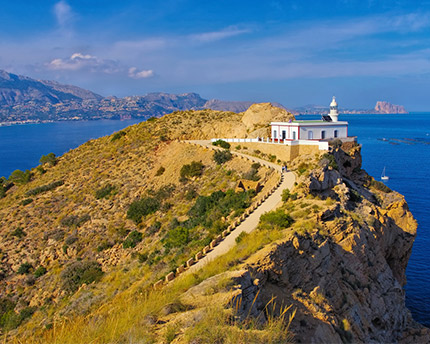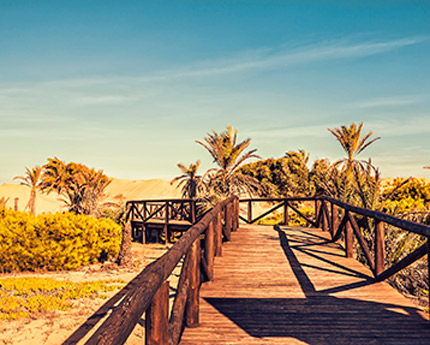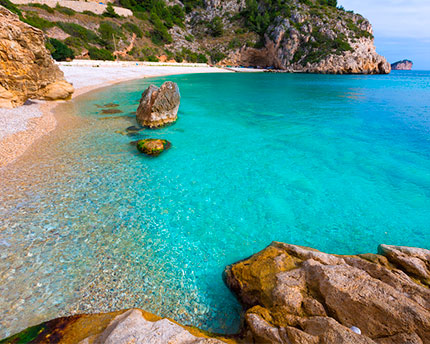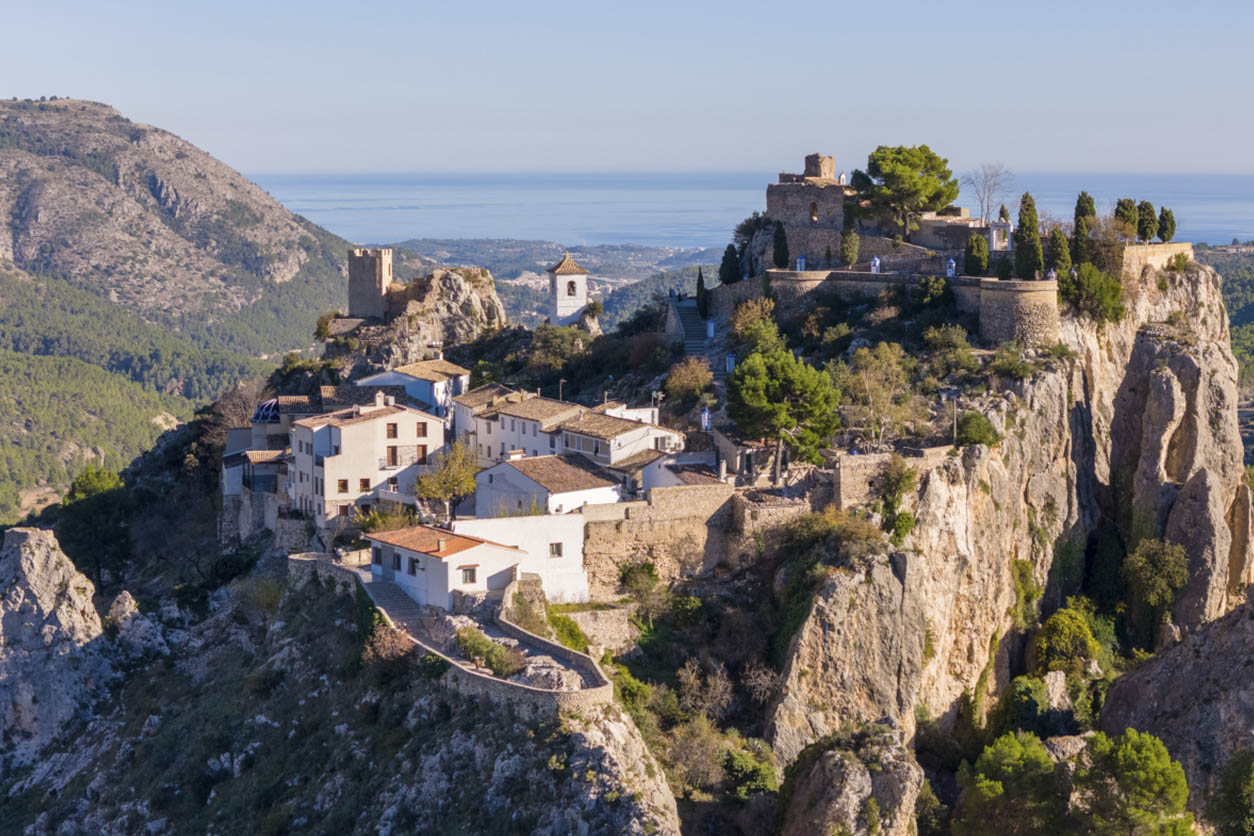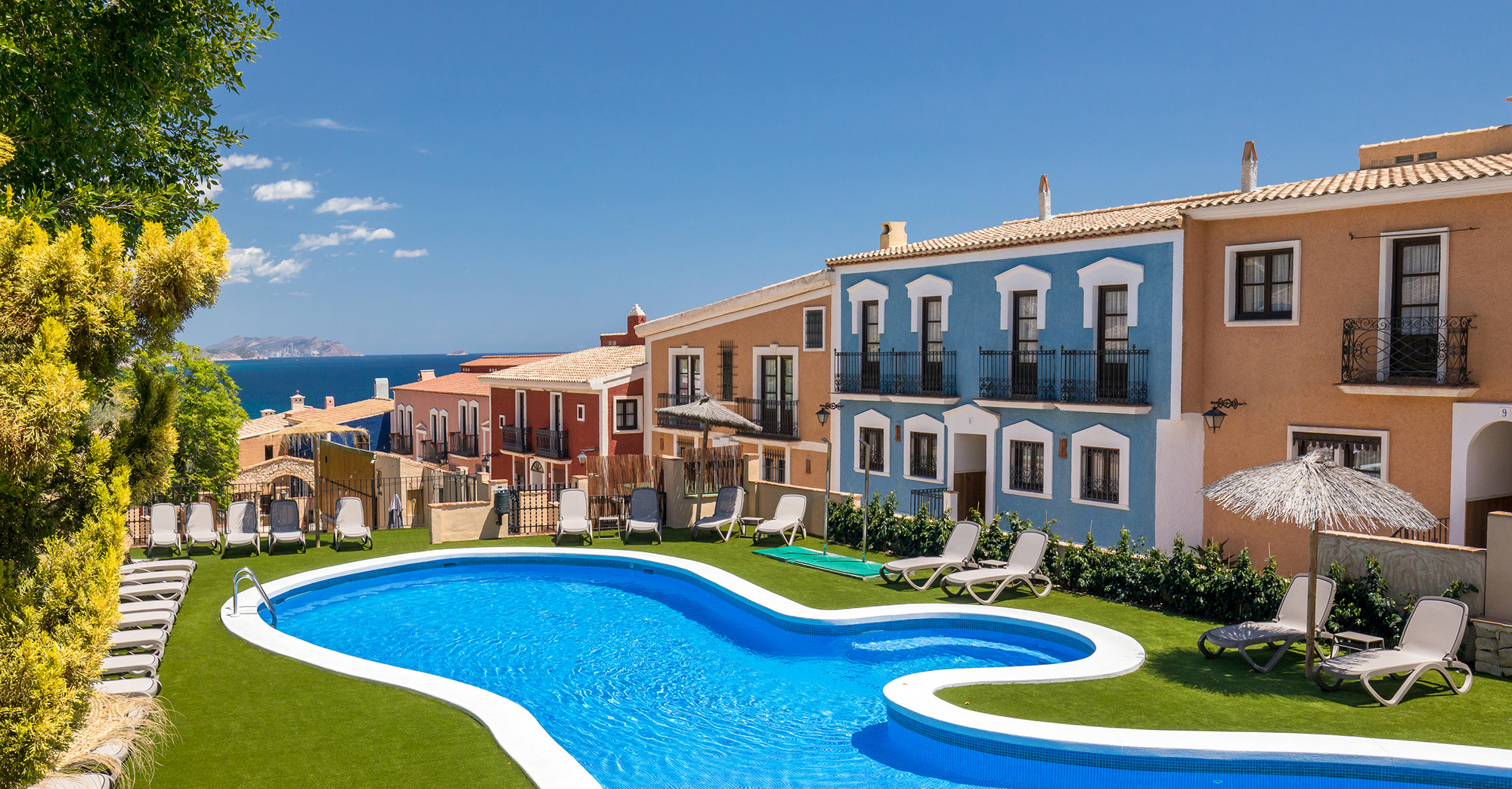Serra Gelada Natural Park is in the municipalities of Benidorm, Alfaz del Pi and Altea. It consists of over 5,000 hectares of protected coastline with cliffs that stand 300 m high, dune fossils, tiny islands where birds come to nest and two flora micro-reserves: one on land and the other in the sea.
Serra Gelada: a wonder of nature
Although Benidorm is a tourist destination famous for its year-round high temperatures, the Serra Gelada enjoys a cold microclimate that possibly gave it its name (gelada=frozen). Its name has also been attributed to the optical effect created by the moon on dark nights as it reflects off the cliffs — perhaps a rather more poetical explanation than the first one!
However, what never fails to impress in this natural park are its imposing rock formations, soaring vertical cliffs that emerge from the sea and famous hanging dune fossil. That’s right -hanging- because the fossilized sand in this dune has been hanging off the cliff for thousands of years. Further attractions include the karst caves where monk seals once took shelter, and fishermen and pirates collected water that filtered through the roof, and the cave of the Whale, which has been eroded by the sea, damp, salt and sand over the years to form an open mouth with spectacular views of the Mediterranean.
The faults at Albir point and La Escaleta point are extremely important in geological terms and offer wonderful scenery, and you also mustn’t miss the mysterious island of Benidorm.
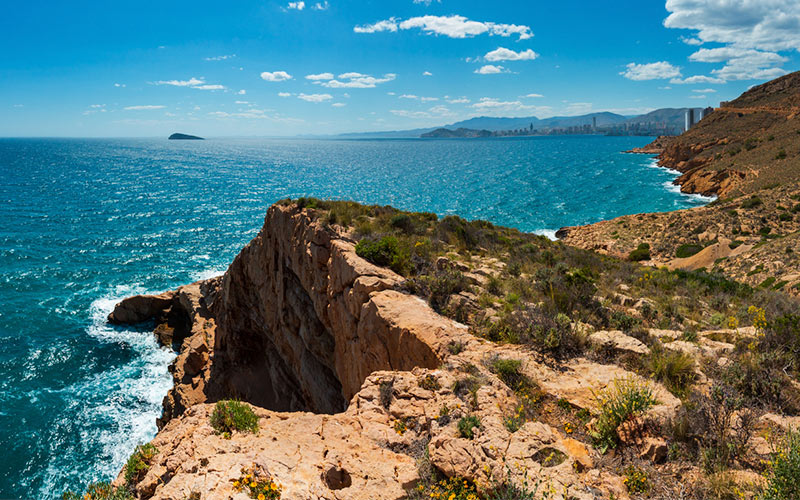
Legend tells that a powerful wizard lived at the top of the mountain. One day he was visited by a knight who was desperately searching for a cure that would save his sickly beloved from her fate. However, the wizard told him that there was nothing he could do. Filled with rage, the knight drew his sword and struck it into the mountain, cleaving off a fragment and creating a small island. After his beloved’s death, the knight carried her lifeless body into a boat and sailed to the island that had been formed by his love. Once there, he stuck his sword into the boat and their souls were swallowed up by the watery depths.
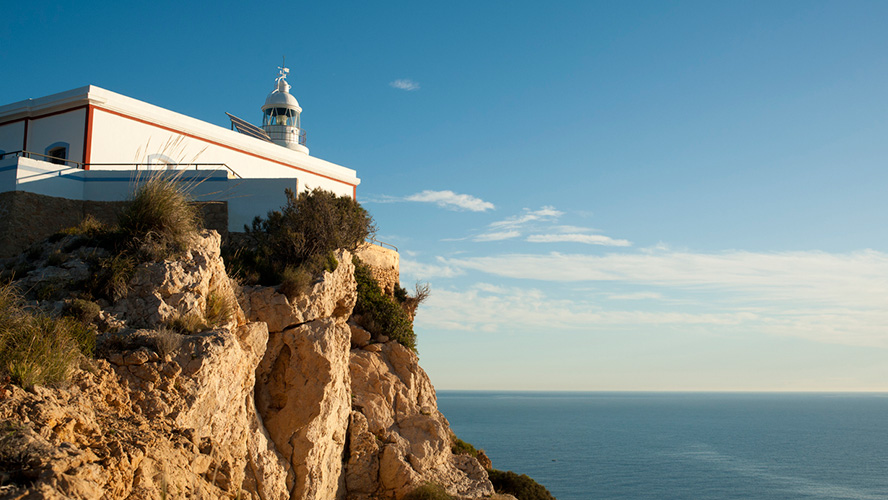
Diving in Serra Gelada: a great Benidorm experience
This Marine Reserve has numerous attractions for scuba diving and snorkelling fans. Visibility is excellent thanks to the crystal clear waters and there are countless details and different species to enjoy. Water temperatures are always around 20 degrees so you can do this sport almost all year round and there are many different dive spots to choose between depending on the difficulty level you’re looking for. Here are some of the most popular and impressive:
Isla Mitjana: one of the Serra Gelada’s underwater islands, very close to Altea. The east side has a depth of 30 m while the west is barely 15 m deep. Its walls are covered with numerous anemones and gorgonia but the area is really famous for the large number of octopuses that call it home.
La Llosa: similarly to La Mitjana, this is a small underwater island in the Serra Gelada in Benidorm. It’s the most popular dive spot for scuba diving in Alicante due to its abundant sea life and spectacular marine landscapes. Divers can enjoy walls covered with coral, vertical drops, sandy bottoms and rocky passageways that hide the secrets of the seabed.
Cueva del Elefante and Cueva del Enanito: these are two shallow dives that are very close to Altea. The circuits pass through beautiful caves and chimneys, with lagoons and air bubbles. An elephant’s head that appears to have been carved into the rock above the water marks the entrance to the first cave.
Los Arcos: this zone is almost 30 m deep and has huge rocks that are carpeted with yellow anemones. Arches are formed by the rocks next to the walls that divers like to swim through and explore until their oxygen levels tell them it’s time to head to the surface.
Trail in Serra Gelada Natural Park: from Benidorm to El Albir
Experiencing the Serra Gelada by sea is impressive whether you go diving or visit on a boat trip. However, you can also explore its hidden coves, enjoy views of the Mediterranean and look out from El Cavall point if you go hiking. Several different trails are signposted but our favourite is the yellow trail from Cruz de Benidorm to El Albir lighthouse. The route covers 8.5 km (taking 4 to 5 hours) and is lineal, meaning that you either have to walk back, catch a bus or leave a car at the start and finish. It runs along the crest of the mountainous coast with marked ascents and descents that are moderately difficult. Choose the red route if you’re looking for something less demanding; this 2.5 km hike runs from El Albir lighthouse to the ruins of the Bombarda tower. Or, the Torre de les Caletes trail is far less challenging trail and is suitable for children. Cool off with a dip at La Almadrava and Tío Ximo coves along the way before you reach the 16th century defensive structure.






































































